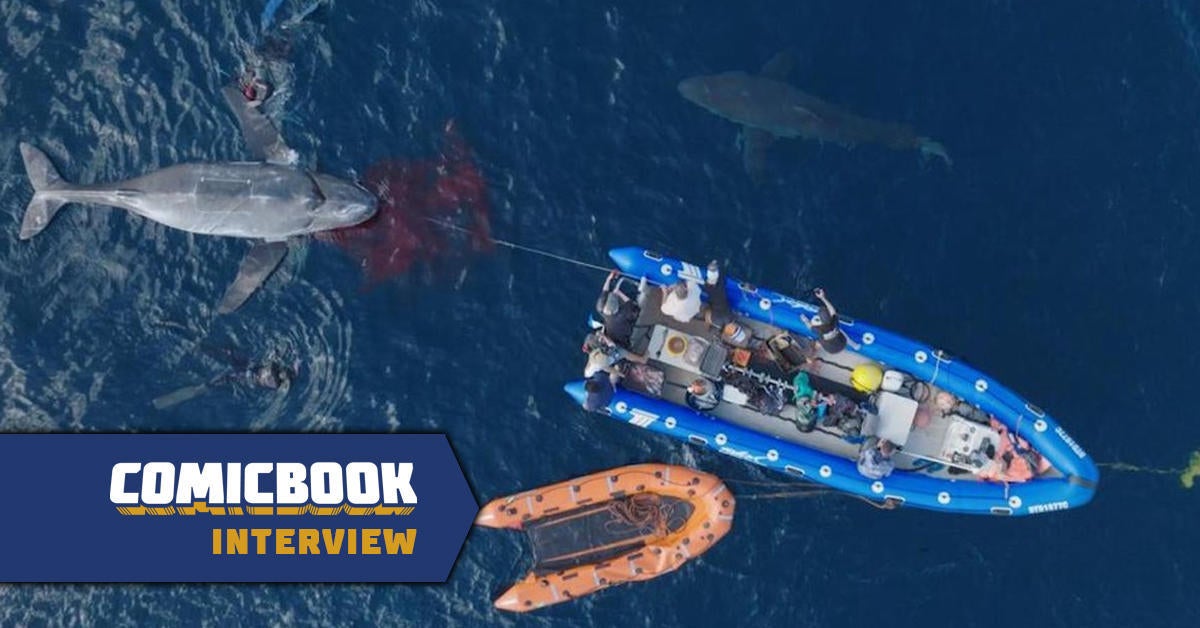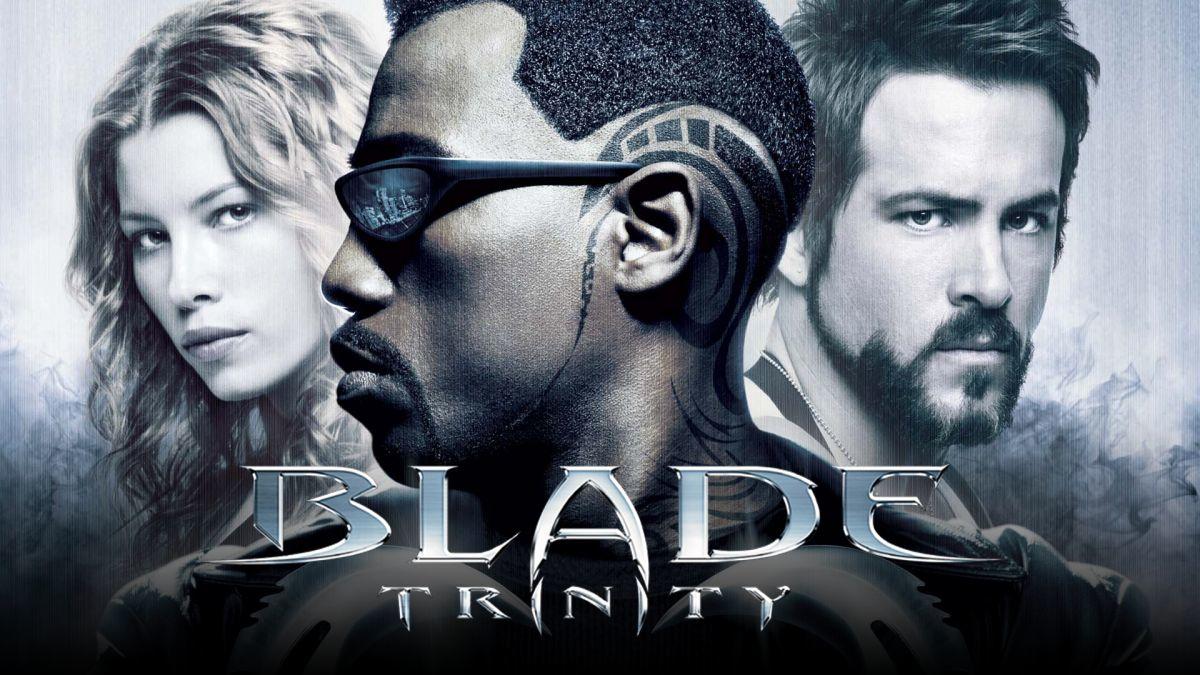Dr. Austin Gallagher Talks His New Shark Week Specials for Discovery Channel
Dr. Austin Gallagher talks Belly of the Beast: Feeding Frenzy and Monster Mako: Fresh Blood on Discovery Channel.
Marine biologists have been using decoys in their research for years, as they've proven to be one of the most effective ways at drawing sharks up to the surface of the water, but with the upcoming Discovery Channel special Belly of the Beast: Feeding Frenzy, Dr. Austin Gallagher takes this concept to thrilling new levels. As if developing a whale decoy in hopes of drawing in great white sharks isn't ambitious enough, Gallagher puts himself inside the decoy to get remarkably close to the fish to gather all-new data. In addition to Belly of the Beast, Gallagher also gets up close and personal with mako sharks in the special Monster Mako: Fresh Blood. Shark Week kicks off on the Discovery Channel on July 23rd.
Belly of the Beast is described, "In a Shark Week first, researchers with cameras brave a great white shark feeding frenzy from inside a life-size whale decoy. Their findings could be the key to finding the biggest great white shark in South African history."
In Monster Mako, "Twelve-foot-long monster mako sharks compete head-to-head with great whites for prey off the coast of California. Using a custom clear, acrylic diving bell, Dr. Austin Gallagher and legendary free diver Andre Musgrove get up close with both predators and track makos breaching eight feet out of the ocean."
ComicBook.com caught up with Dr. Austin Gallagher to talk about his new specials, his favorite sharks, and what's next for his research.

ComicBook.com: With this year's Shark Week, you have a few specials. You get to work with makos, you get to work with great whites. Not to put you on the spot, but do you have a favorite type of shark?
Dr. Austin Gallagher: That's a great question. I feel like it's changed a lot over the years. I've got to be honest: I love tiger sharks. They are the ones that I do probably the most work on through my own research at Beneath the Waves. It's an organization that I founded. I've done a lot of Shark Week shows on tiger sharks.
But this year we went into the colder waters, and this is the second year in a row I did a show on white sharks. They are my favorite because they are so smart. They are so smart. They are the kings and queens of Shark Week for a reason. They're just on a different level. They really are just on a different level. You see that, especially in Belly of the Beast, the show this year that's leading off Shark Week.
With Belly of the Beast, everything about the whale decoy EARL, just designing it, executing it, the added blood helmet, it really, I feel like, pushes Shark Week to new depths, I guess, as opposed to heights. When it came to EARL specifically, what was the most challenging thing about bringing that submersible, that decoy to life?
I would say the most challenging thing was figuring out a way that would simulate a real whale carcass, but also doing it in a safe way for me and for the sharks, too. I've done quite a bit of research, Patrick, on the ecological importance of dead whales for white sharks. They are everything for these white sharks. They sustain them on their migrations. They bring the largest white sharks in. It's incredible. When white sharks get really big, it becomes hard for them to kill seals. They might actually be swimming around waiting, looking for these dead whales.
We knew it was going to be an exciting thing to do. We ended up building something that simulated that. But getting inside was freaky, I'll be honest. We wanted to make sure that that observational platform that I was going to be in would give good observations, but also we didn't want the sharks to break it and then eat me. I didn't want to die.
As an audience member, since I don't have that adrenaline surge that you probably had, was the possibility that something could go wrong while you're inside of EARL, is that something that you are constantly aware of, but maybe you are allowing your objective to take over? Or is it something where the adrenaline is surging so much that it's almost like an afterthought of, "Wow, that's how close I really came to something dangerous happening,"?
All the above. I would say that pre-visualizing these things ahead of time is always what I do in terms of a safety standpoint. Going through all the things that could go wrong, what would you do when it goes wrong, lots of time sitting with myself thinking about that. This is, of course, after already speaking to all of the medics and the operations folks. But I would say the first time before I do something, whether it's a cage dive or any dive with sharks or EARL, you have that come-to-realization moment, "Okay, this is what's going to happen. I'm good." Then you go do it and you don't think about it because the adrenaline does take over. But then you come out of that experience and then you think, you reassess, you reevaluate, and what could you do differently?
With EARL, I was pretty freaked out about it until I actually laid eyes on it in South Africa. It was built in South Africa. When I finally got there and saw it, I didn't feel as bad. I didn't feel as bad, but I felt a lot safer. Really well constructed. With the small white sharks, it wasn't a big deal.
But when the huge 18-, 20-footers showed up in the second part of the show, all bets are off. At that point, it's like we're scrambling to get the shots, getting in the water, you have no idea what's going to happen with this large animal. I actually stayed in it, I guess, for like five hours, which was amazing. But if that shark wanted to, it could have destroyed EARL and me. I felt that for sure. There were definitely a few moments in the heat of it where I was telling the crew, and you could hear it in the show, "Guys, if this thing goes wrong, you got to get me the f-ck out of here," is what I said. I meant it. I mean, it's like I had an exit strategy just in case I got knocked out.
With both Belly of the Beast and Monster Mako, there's lots of really exciting footage, lots of information, lots of exciting reveals just as a viewer. With both of these specials, what were your major takeaways and how do you think those takeaways will impact your future research?
That's a great question. A big thing, for me, the takeaways from the show is that doing innovative science is really awesome. Going around the boundaries, working on the edges of innovation is something I always try to do. With our own research at Beneath the Waves, that's a huge thing. I've always been a bit of a maverick in terms of my approach to shark science and wanting to do things differently. I didn't want to do the same thing as everyone else. To me, that's just boring.
I love trying new things, and when you get the payoffs that we did on these two shows ... Shark Week allows me, as a scientist, to do riskier things, to do projects that I might not be able to do always with a typical, funded study or a week-long expedition. The takeaways are that if you push the boundaries and you innovate the right way, sometimes the biggest rewards come from that.
Looking to the future, you've had so many different specials for Shark Week already dealing with so many different species and really pushing boundaries. Have you started thinking about Shark Week 2024 and some of the things that you're hoping, whether it be taking research from past specials that you want to explore further or a brand-new foray that you want to embark upon?
Well, I think that we might want to take EARL to another place and do a Belly of the Beast sequel because it worked so well. That might be something that we might look at.
I'd like to get back to the Caribbean. A lot of my research is focused in the Caribbean on tiger sharks, hammerheads, bull sharks. We made this really incredible discovery last year, Patrick, where we partnered with tiger sharks and we found the world's largest seagrass ecosystem. It was huge viral news in November 2022. Huge. I mean, the entire country of the Bahamas essentially is an underwater seagrass meadow and by putting cameras on tiger sharks, we found this.
What I want to do now is zoom into a day in the life of a tiger shark and follow a tiger shark with an underwater automatic vehicle, a UAV, unmanned autonomous vehicle, and basically just follow that shark through its day, see what it does. The longer you can observe these sharks, the more time you get, the more incredible things you see. That's the inherent challenge about not having gills is that you just don't get as much time in the ocean.
Belly of the Beast: Feeding Frenzy premieres on Discovery on July 23rd at 8 p.m. ET. Monster Mako: Fresh Blood premieres on Discovery on July 27th at 9 p.m. ET.
This interview has been edited for length and clarity. You can contact Patrick Cavanaugh directly on Twitter.




